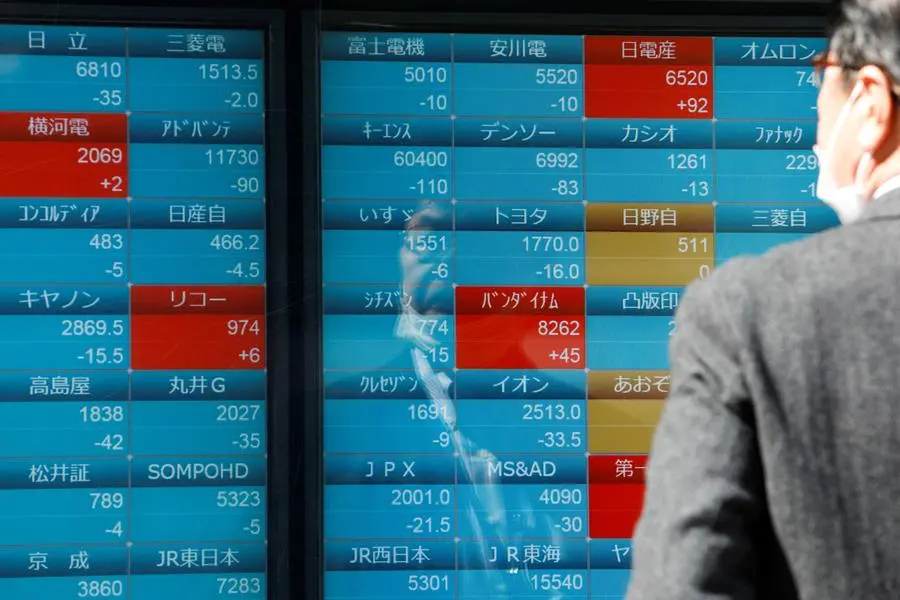PHOTO
Japan's bond investors are making their return to overseas markets after a long gap, but their fresh buying is hedged, short-term and not the dominant force on interest rates and currencies it used to be.
In what appears to be a staggering turnaround, Japan's finance ministry data showed domestic investors bought 10.8 trillion yen ($80.50 billion) worth of overseas bonds in the first quarter of this year - their biggest quarterly purchase in about 13 years.
They were steady sellers of about 23 trillion yen worth foreign bonds through 2022 as the U.S. Federal Reserve and other central banks worldwide raised rates aggressively, causing bond prices to fall.
The data however also showed only Japanese banks have resumed buying foreign bonds, not the insurance firms and pension funds with staying power, and this buying was concentrated at the short end of U.S., European and other bond markets.
"FX hedge costs are not a major consideration for most Japanese banks with major offshore operations," said Prashant Newnaha, senior Asia-Pacific rates strategist at TD Securities.
"In contrast, lifers, the accounts most sensitive to FX hedge costs, show no appetite to purchase offshore bonds, given the prohibitive costs."
While Japan remains the world's largest creditor nation, its portfolio investments overseas are traditionally hedged for currency risk, given the yen's wild swings.
But the cost of being insulated against those swings has soared as U.S. and European interest rates rose while Japan's remained pegged near zero.
It costs roughly 5.4% on an annualised basis to swap three-month yen contracts for dollars, which is far higher than the 5% yield on short-term Treasuries and 3.5% on 10-year ones.
Analysts said that explains why banks, which have access to Fed repurchase agreements at around 4.5%, are the main buyers of Treasuries. Japanese banks bought 7.04 trillion yen worth of foreign bonds in the first quarter, while Japanese insurers sold 1.2 trillion yen worth of foreign bonds.
"Japanese investors get the best rates at shorter maturities, minimising the risk of price erosion on the securities they buy and also allowing them to gather the best rates with no need to take longer-term exposure," said Milton Ezrati, chief economist at financial communications firm Vested.
"Because the currency hedge eats up just about all the interest rate differential, most of the investments are unhedged."
That, analysts said, may curtail the Japanese overseas bid. Investors are not selling yen to buy foreign bonds either, implying negligible impact on the yen.
"Both the selling last year by lifers and banks and their purchases this year are through repos or through swaps, so basically nothing to do with the currency market," said JP Morgan analyst Tohru Sasaki.
TRADING, NOT INVESTMENT
Sasaki suspected most of these short-term investments are bets on capital appreciation in bonds as central banks hit peak rates, rather than any expectation of income via coupon payments.
But the Japanese bid will get stronger once the yen rallies a bit more, reducing the currency risk of investing, he reckoned. The yen was trading around 134 per dollar on Monday.
"Eventually they (life insurance firms) need coupon income so they need to buy foreign bonds at some point. It's difficult for them because of the FX hedge, so they may need to buy without FX hedge, maybe when dollar-yen is below 130."
Their destination may also change. Pooja Kumra, strategist at TD Securities, said European bonds may soon lure Japanese investors away from Treasuries, which have been the preferred investment thus far.
"Due to the significant decline in rates during COVID-19, there were not much flows into the European bond market," Kumra said.
But as European yields catch up with Treasuries, euro-denominated bonds are attractive for Japanese investors, both on a hedged and unhedged basis, she said. ($1 = 134.1600 yen)
(Reporting by Patturaja Murugaboopathy and Gaurav Dogra in Bengaluru; Additional reporting by Harry Robertson in London; Editing by Vidya Ranganathan and Christopher Cushing)





















